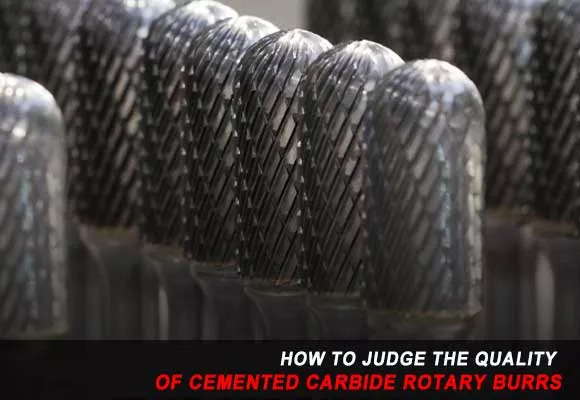
How to Judge the Quality of Cemented Carbide Rotary Burrs
Cemented carbide rotary burris an indispensable tool for fitter mechanization. It has a wide range of uses, especially in aviation, shipbuilding, automobile, machinery, chemical and other industrial sectors. It can be used to process cast iron, cast steel, carbon steel, alloy steel, stainless steel, hardened steel, copper and aluminum.Cemented carbide rotary burrproduced by Kone Carbide adopts latest research results in tooth making process of special rotary tools, improves cutting conditions of tool head, and is suitable for processing various complex profiles.Cutting hardness can reach 65HRC, and products comply with ISO quality standards.

Therefore, whether it is for users or suppliers to judge the quality of the Carbide rotary burr is a very important factor. There are Several basic indicators of cemented carbide rotary burrs.
1.Decarburization and polishing

In process of carbide burr production, first step is to anneal burr wool. Because annealing can reduce hardness of wool, it is convenient for subsequent processing and reduces loss of processing equipment.
Material of carbide rotary burr for chamfering and deburringis T12 high carbon steel, which is an alloy of iron and carbon. When burr blank is annealed, surface carbon will be lost because of high temperature. After carbon is lost, iron is left, so if decarburized part cannot be completely polished when surface of rotary burr is polished, a part of iron material will remain on surface, and iron material of final produced burr will not reach standard after heat treatment. Hardness and cutting ability will drop significantly. (After all, hardness of iron is much lower than that of steel. Of course, iron burrs on surface cannot match performance of steel).
Tungsten carbide rotary burr factory that pursues quantity is not very strict when it comes to decarburization after annealing. It requires 100% removal of decarburized layer and uses a grinder for grinding, and quality inspector needs to test 100% piece by piece, which guarantees performance of carbide burr and increases life.

2.Tooth pattern
Biggest indicator of a rotary burr is angle of tooth pattern. A good burr must ensure that tungsten carbide rotary burris sharp and smooth. If it is only sharp, it will easily pick up debris from burr. burr a few times when working. After that, surface must be cleaned once, orwise it will not be able to continue after being filled with debris. If only chip is smoothly removed, burr is not sharp, n re is no need to say it, you can imagine.
Kone Carbide has a dedicated cutting team. They are constantly testing and improving tooth pattern of rotary burrs. They use spirit of craftsmen to lead team and strive to make best burrs in world.
3.Heat treatment
After carbide rotary burr for chamfering and deburring is chopped, it needs to be quenched. The national standard of carbide burr must be above HRC62, so that carbide burr produced can ensure cutting sharpness. However, because of higher hardness requirements during quenching, temperature control requires extreme rigor. Once deviation occurs, it is easy to cause a whole batch of carbide burrs to crack (1.2 meters of free fall on a cement floor will break into many sections), so some manufacturers In order to save costs, quenching hardness of carbide burrs will be reduced accordingly to ensure yield. Once hardness decreases, cutting ability and durability will decrease. Kone Carbide strictly follows inspection system on a branch-by-branch basis, which not only ensures that hardness of carbide burr meets standard, but also ensures that cracked carbide burr will not be discharged.
A good carbide burr will make you feel as comfortable as playing a violin during use. Due to different grading standards and different production processes, quality of corresponding carbide burrs must be different.